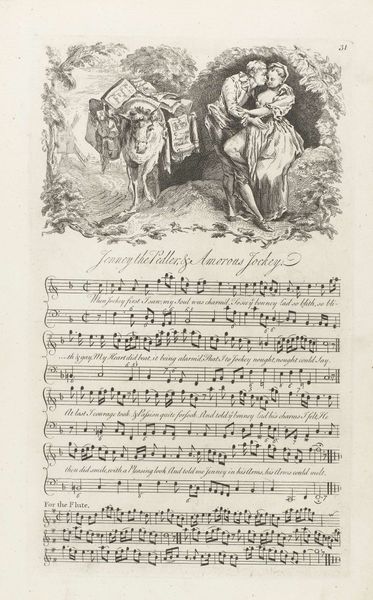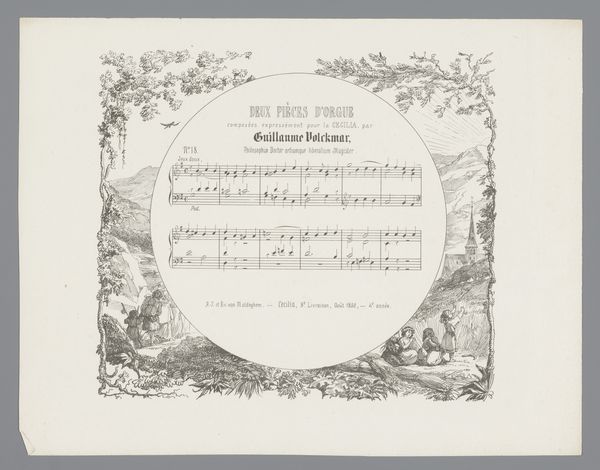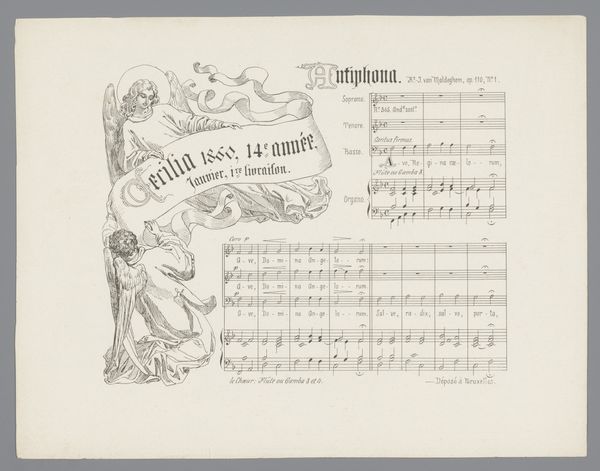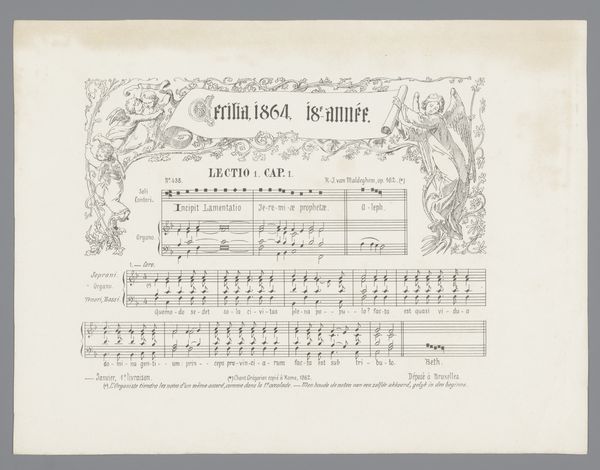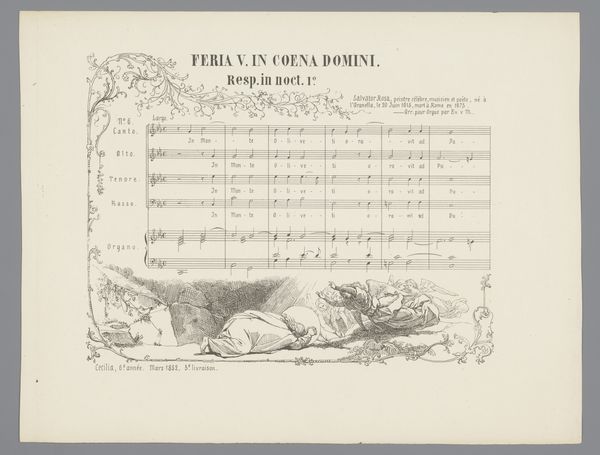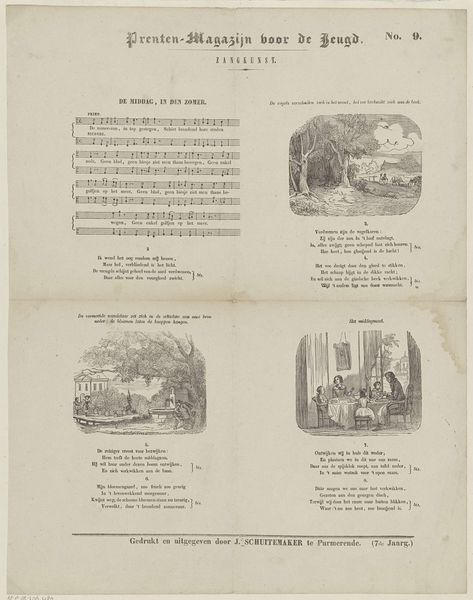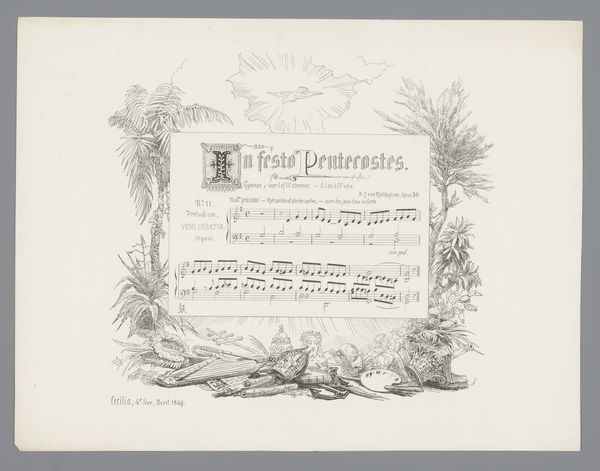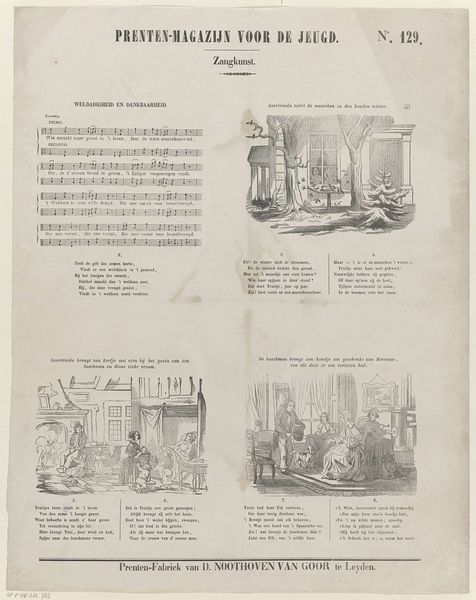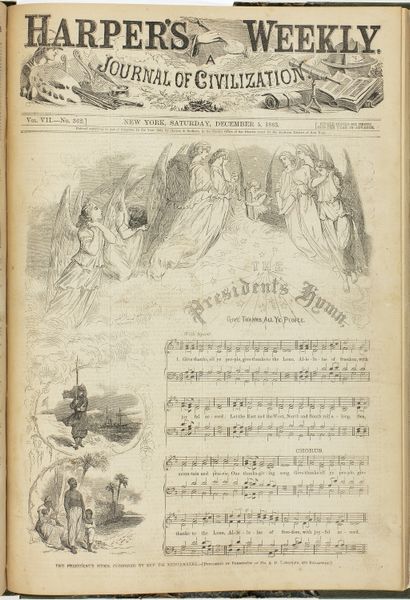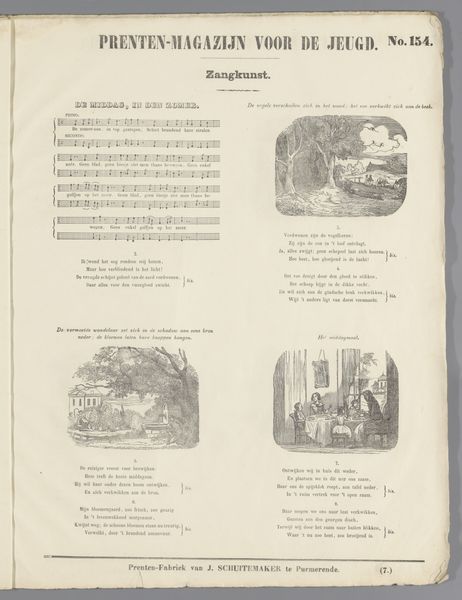
drawing, print, etching, paper, ink
#
drawing
#
narrative-art
# print
#
etching
#
paper
#
ink
#
history-painting
Dimensions: height 270 mm, width 345 mm
Copyright: Rijks Museum: Open Domain
Editor: This etching from 1849 by Eugène Van Maldeghem, titled "Slapende soldaten bij het graf van Christus"—"Sleeping Soldiers at Christ's Tomb"—feels incredibly unique. I am captivated by how the artist combines a biblical scene with a musical score; it almost resembles a page ripped from an illuminated manuscript. I can clearly distinguish an angel, the sleeping soldiers, and, above, lines of music notation. How do you interpret this juxtaposition of the sacred and the…musical? Curator: It’s a compelling combination, isn't it? Considering the historical context, the mid-19th century witnessed a surge in artistic explorations intertwining religious and nationalistic sentiments. Could this piece perhaps be seen as a visual and aural representation of faith—a combined experience appealing to both the eyes and ears of its intended audience, contributing to a larger project to cultivate civic virtue and spiritual upliftment through cultural products? Who was this music meant for? Editor: That's a very interesting point. Perhaps this artwork was for personal devotion, meant to inspire not just through image but also through song. Given the context of its creation, do you think the intended function affects our understanding of its message, of the historical, or socio-political forces in play here? Curator: Absolutely. The inclusion of the musical score shifts it from mere devotional art to a piece that invites participation. It implies a community engaging with the depicted event—the Resurrection—through song, fostering a sense of shared identity. Looking at art is a dialogue with past. What are other cultural codes Van Maldeghem might be using in this etching? Editor: I hadn’t considered it that way, seeing how cultural consumption in the nineteenth century can promote a community of belief. Viewing this artwork has revealed its function and broader cultural influences in new, meaningful ways. Thank you. Curator: And thank you. It’s a reminder how art actively shapes—and is shaped by—the historical context surrounding its creation and the modes through which it can promote common values and community cohesion.
Comments
No comments
Be the first to comment and join the conversation on the ultimate creative platform.


